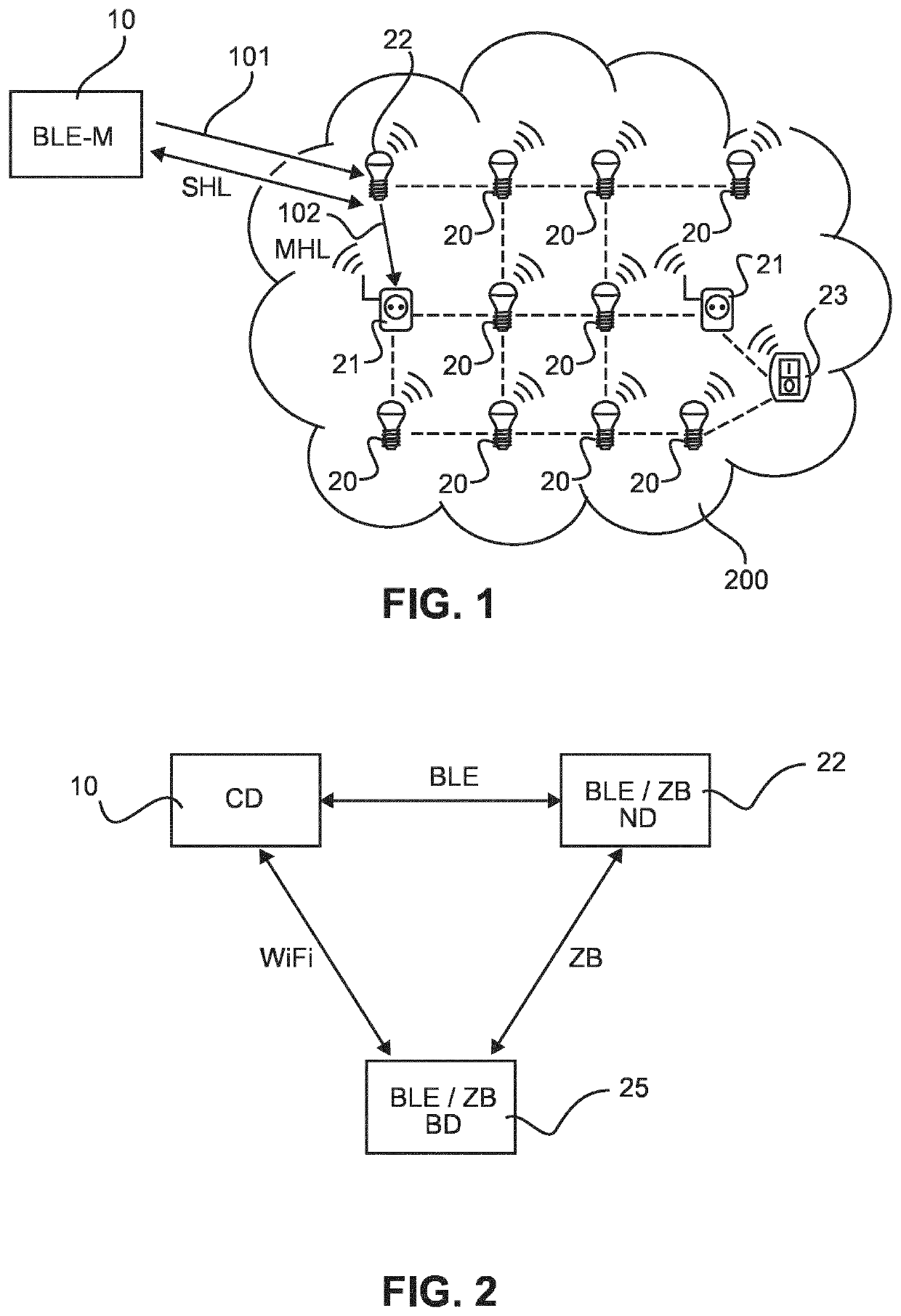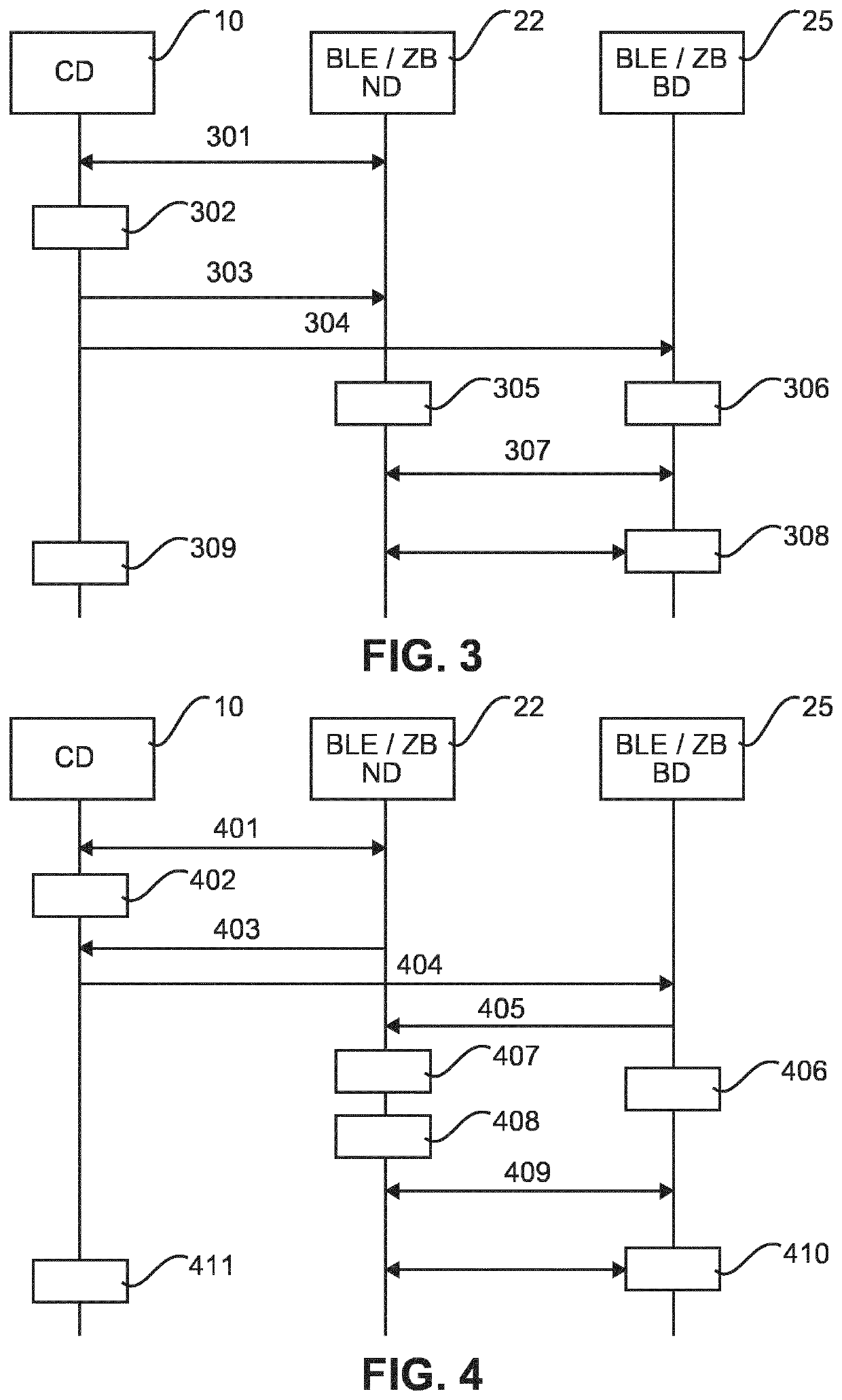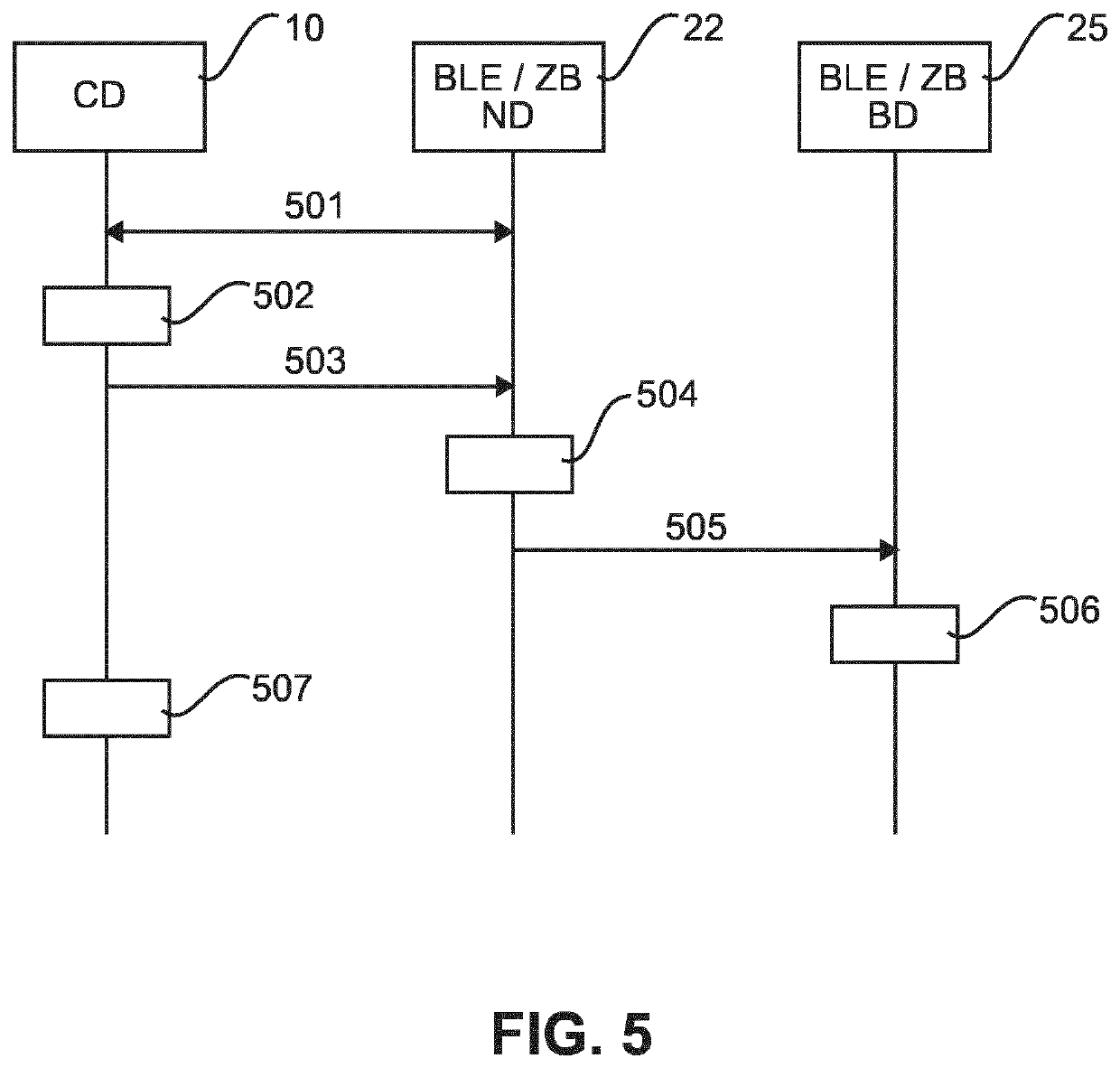Commissioning in multi-hop networks by using a single-hop connection
a multi-hop network and single-hop technology, applied in the field of wireless network commissioning, can solve the problems of security risk and disadvantages of existing zigbee commissioning methods
- Summary
- Abstract
- Description
- Claims
- Application Information
AI Technical Summary
Benefits of technology
Problems solved by technology
Method used
Image
Examples
first embodiment
[0038]FIG. 3 shows a signaling and processing diagram of a joining procedure where the external commissioning device (CD) 10 is used as BLE master and provides a user interface for a new combo radio device (ND) 22 which is used as BLE slave with additional ZigBee (ZB) communication unit. In FIG. 3 as well as the remaining FIGS. 4 and 5, horizontal arrows indicate signaling between devices indicated by boxes at the top of the diagrams and the blocks below the boxes of the respective devices indicate processing steps or procedures of the device located above the respective block. The time proceeds in the vertical direction from the top to the bottom of the diagrams.
[0039]In the following, a joining procedure according to the first embodiment is described with reference to FIG. 3.
[0040]To allow a new combo radio device 22 (e.g. a lamp or luminaire) to join a ZigBee network via BLE it needs to offer additional functionality via its BLE interface (next to the basic light control functio...
second embodiment
[0048]FIG. 4 shows a signaling and processing diagram of a joining procedure where the new combo radio device 22 is adapted to expose a unique secret information (such as the 6-digit hexadecimal number or so-called “install code”) via a GATT characteristic (“ZigBee commissioning code”) or other appropriate means and provide that secret to the bridge device 25, which can use it to force the new combo radio device 22 into a commissioning mode, or allow combo radio device 22 to join the network.
[0049]In step 401, the commissioning device 10 of the user is paired and bonded via BLE to the new combo radio device 22 that supports both ZigBee and BLE.
[0050]If the user now wants to add this new combo radio device 22 to a ZigBee network of the bridge device 25, it triggers this action in an app of the commissioning device 10 in step 402. Alternatively, the app could detect presence of the bridge device 25 and could automatically trigger the action to add the new combo radio device 22 to the...
third embodiment
[0060]FIG. 5 shows a signaling and processing diagram of a joining procedure where additional information is provided to the new combo radio device 22 such that the bridge device 25 does not need to open the network.
[0061]In step 501, the commissioning device 10 of a user is paired via BLE to the new combo radio device 22 that supports both ZigBee and BLE.
[0062]If the user now wants to add this new combo radio device 22 to the ZigBee network of the bridge device 25, it triggers this action in an app of the commissioning device 10. Alternatively, the app of the commissioning device 10 could detect presence of the bridge device 25 and could automatically trigger the action to add the new combo radio device 22 to the ZigBee network of the bridge device 25.
[0063]Once the “add lamp to bridge” action has been triggered in step 502, the app of the commissioning device 10 provides in step 503 network information details (such as channel, PAN ID and network key, which could be received e.g....
PUM
 Login to View More
Login to View More Abstract
Description
Claims
Application Information
 Login to View More
Login to View More - R&D
- Intellectual Property
- Life Sciences
- Materials
- Tech Scout
- Unparalleled Data Quality
- Higher Quality Content
- 60% Fewer Hallucinations
Browse by: Latest US Patents, China's latest patents, Technical Efficacy Thesaurus, Application Domain, Technology Topic, Popular Technical Reports.
© 2025 PatSnap. All rights reserved.Legal|Privacy policy|Modern Slavery Act Transparency Statement|Sitemap|About US| Contact US: help@patsnap.com



